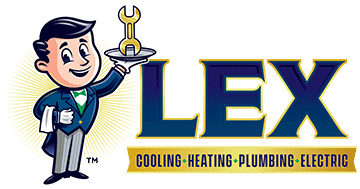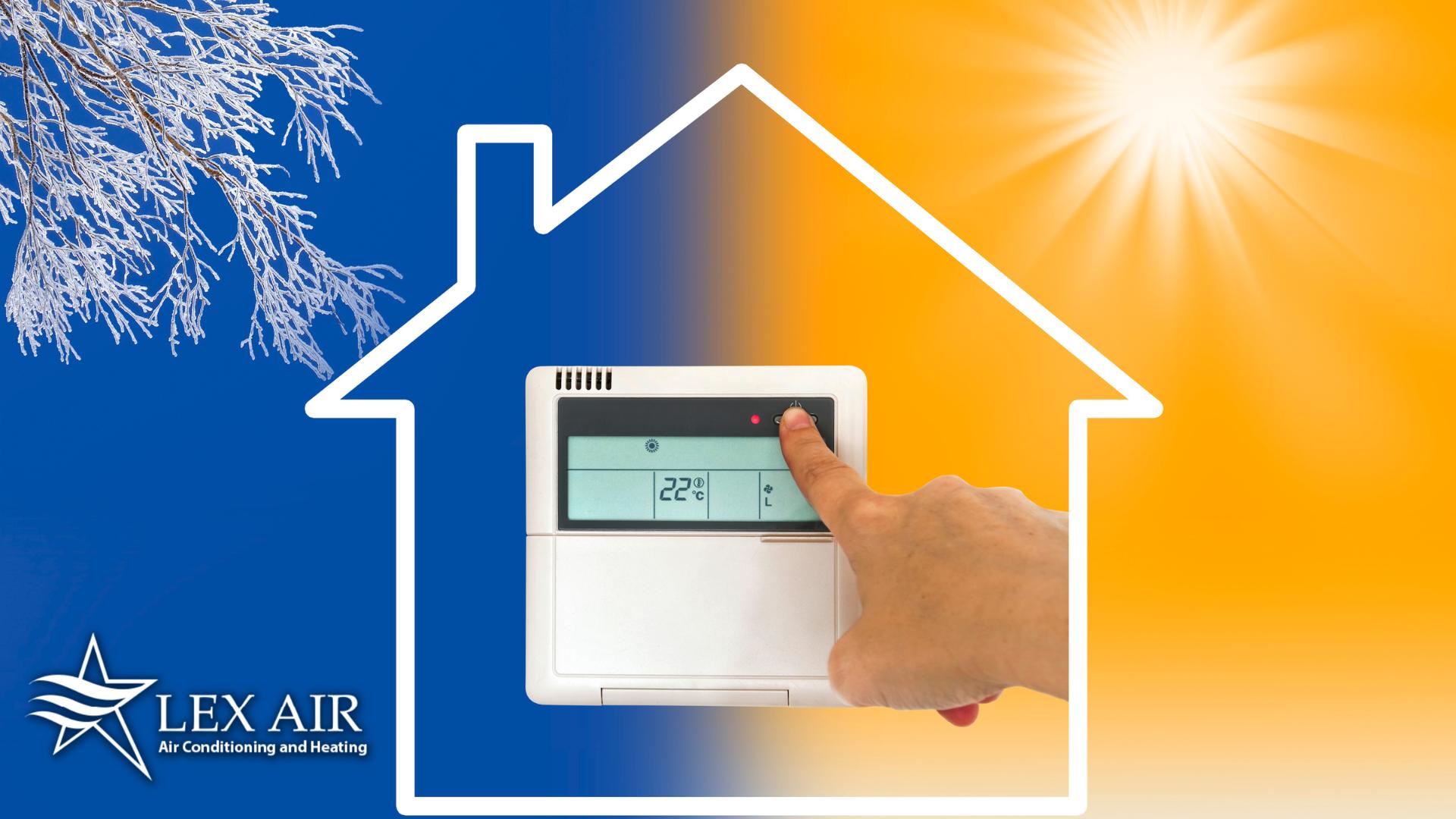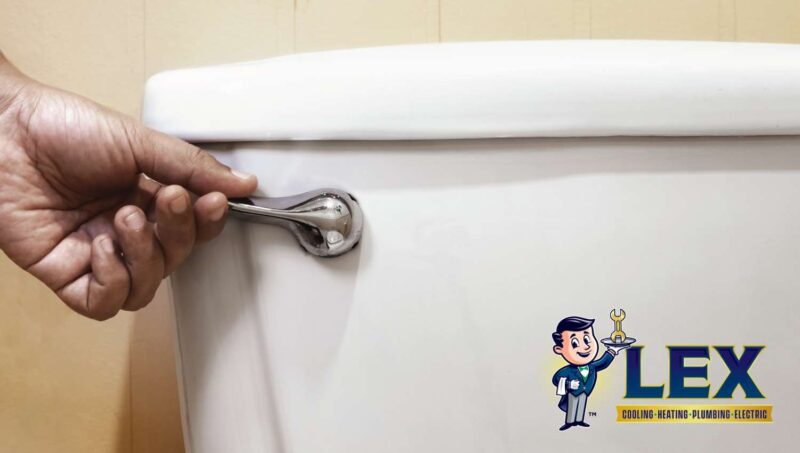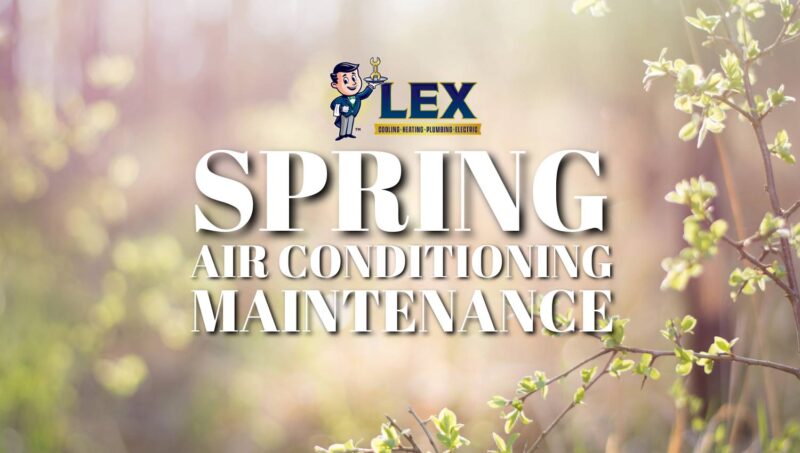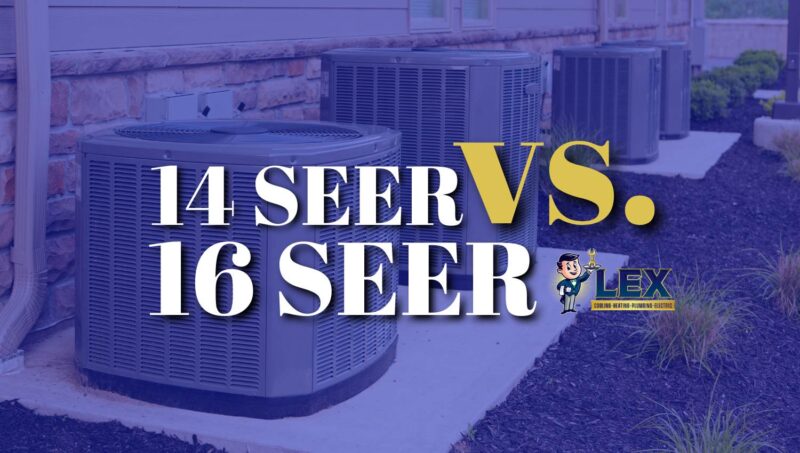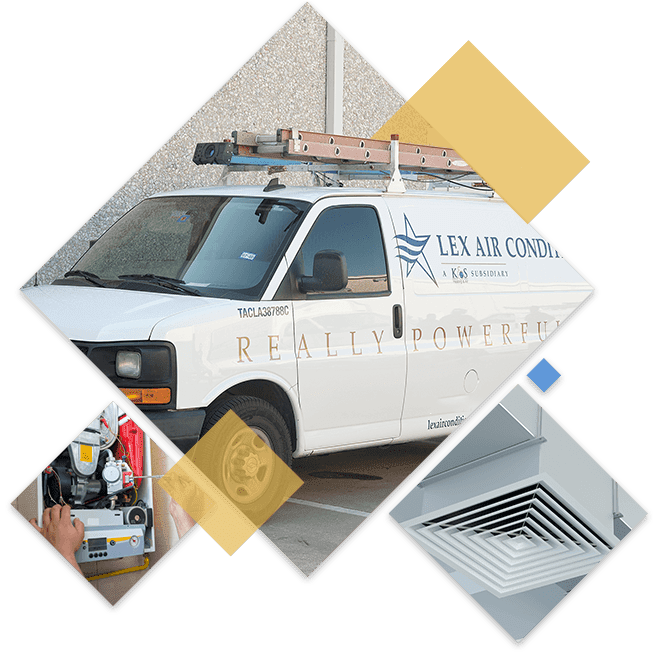In Carrollton, Texas, we rely on functional and efficient air conditioning to get us through hot, humid summers and a furnace or heat pump to keep us warm in the winter. Many homeowners’ knowledge regarding the heating and cooling system inside their home consists of changing filters and knowing when it’s working or not working. Learning more about your HVAC unit and how it works can help you be aware of when potential issues are on the rise. So what exactly does your HVAC system do?
In this article, we’ll be explaining how traditional HVAC systems work. These types of systems are also known as split systems because they have one system responsible for cooling and another responsible for heating. Other types of HVAC systems are hybrid split systems, duct-free systems, and packaged systems.
It’s important to understand how your HVAC system works, but it’s best to leave any air conditioning and heating system maintenance to the experts at Lex Air. Our Carrollton AC technicians have experience working with all HVAC system types and can get your system back working in no time.
What is an HVAC System?
HVAC systems are made up of intricate parts that work together to heat and cool our homes. While we pretty much only concern ourselves with the AC part of the HVAC in Texas, it’s more than just an air conditioner. HVAC stands for heating, ventilation, and air conditioning. If you’re wondering how your HVAC system heats and cools your home, the Lex Air Conditioning and Heating technicians will explain more below so you can get to know the components that make up your HVAC system.
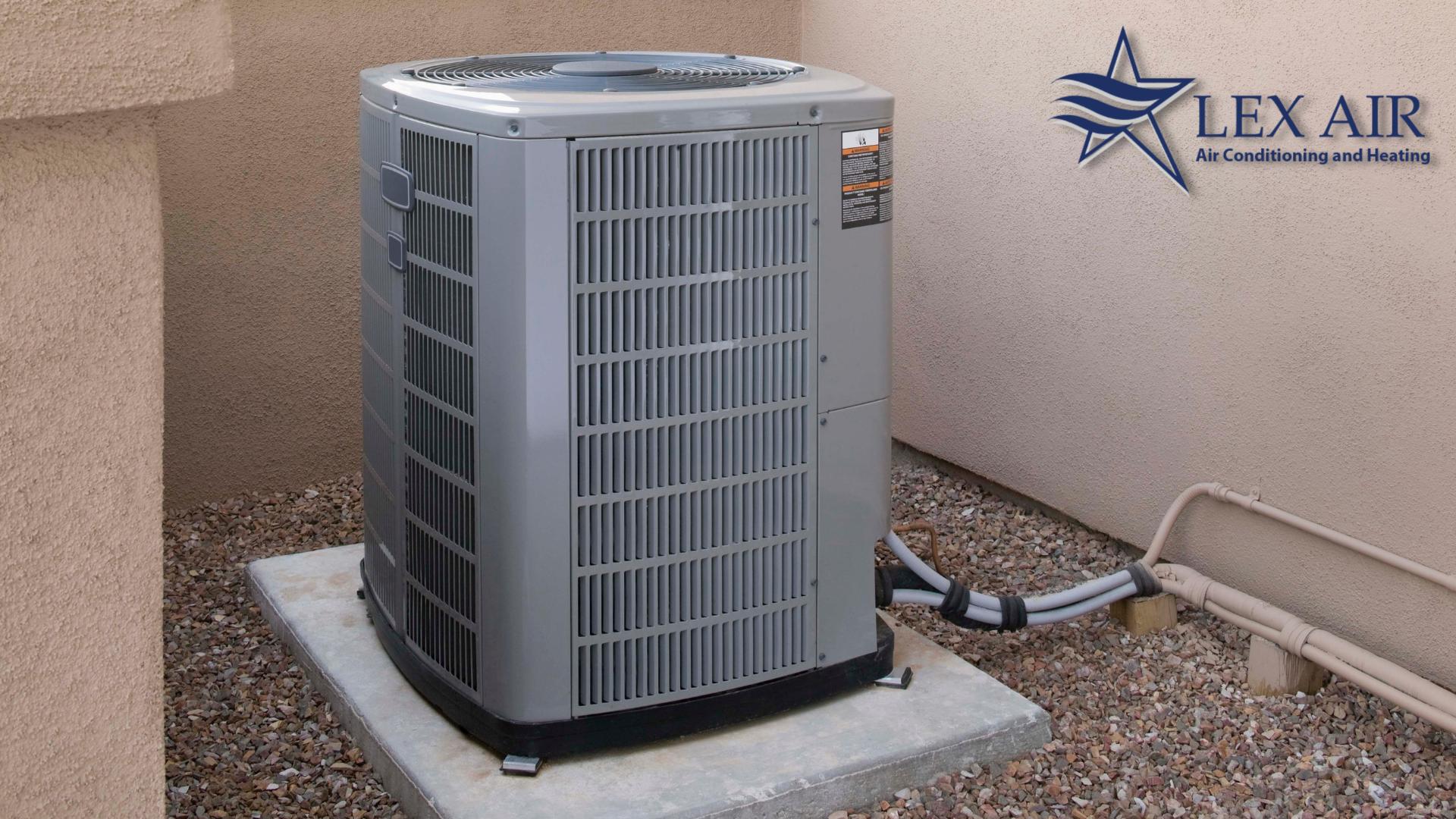
Outdoor Unit
Most air conditioning systems consist of one unit located outdoors and another unit inside. Together, they work to remove warm air from inside your home, release it outdoors, and provide cool air inside your home. The outdoor unit of your HVAC system houses parts that are responsible for cooling or heating the indoor air. While the inside unit absorbs heat from within your home, the outside unit releases that warm air outdoors. Without the outside unit, the warm air that the inside unit collects would have nowhere to go.
The outside portion of the HVAC unit contains the compressor, which converts gas refrigerant to liquid and sends it through the condenser’s coils, which condition the air that goes into your home. The compressor is responsible for continuously cycling the refrigerant so the AC unit can reuse it. When the warm air from inside the house has reached the outdoor unit, a fan will cool the refrigerant. Once cooled, the refrigerant is pushed through to the indoor AC unit, and the process starts over again.
The Importance of Outdoor HVAC Unit Maintenance
The outside unit is susceptible to getting clogged with dirt and leaves, so it’s important to periodically check the condenser to ensure nothing prevents it from working properly. The outdoor fan is another part of the outside unit that can get clogged. Twigs can find their way into the fan, so look for any kind of obstruction as part of your inspections.
Keeping yard debris away is important, but if you suspect a problem, don’t try to repair it yourself. Always let a professional service any parts on the outdoor unit. When you partner with Lex Air Conditioning and Heating, you have the option to sign up for our annual maintenance program, the Cool Club. As a member, you’ll receive twice-a-year maintenance visits on your HVAC system – air conditioner maintenance in the spring and heater maintenance in the fall.
Maintaining your heating and air conditioning unit is essential as it can help you avoid any emergencies and keep your unit in compliance with the manufacturer’s warranty. Routine maintenance also helps your HVAC system be more energy efficient while keeping your energy usage and costs low. Cool Club members also receive additional benefits like priority service, discounts, no overtime or after-hour charges, and more. To learn more about our annual maintenance program, call Lex Air today.

Indoor Unit
The indoor unit is called the air handler and may be installed in a utility closet, basement, or attic. Wherever your indoor air conditioning unit is inside your home will be the same place you’ll find your furnace. The inside unit is responsible for circulating the hot or cold air throughout your house.
The unit contains a coil box that holds the evaporator coil. The refrigerant runs through the evaporator coil in order to absorb heat and evaporate. When the heat has been absorbed and runs through the cycle, the now-cooled air is blown into your home. Some air handlers are equipped with variable speed blowers and damper systems to control how the air flows.
If the air handler comes equipped with an air filter for the whole house, you’ll want to be vigilant about changing that filter on the manufacturer’s recommended schedule. Most air filters need to be replaced every 30 to 90 days.
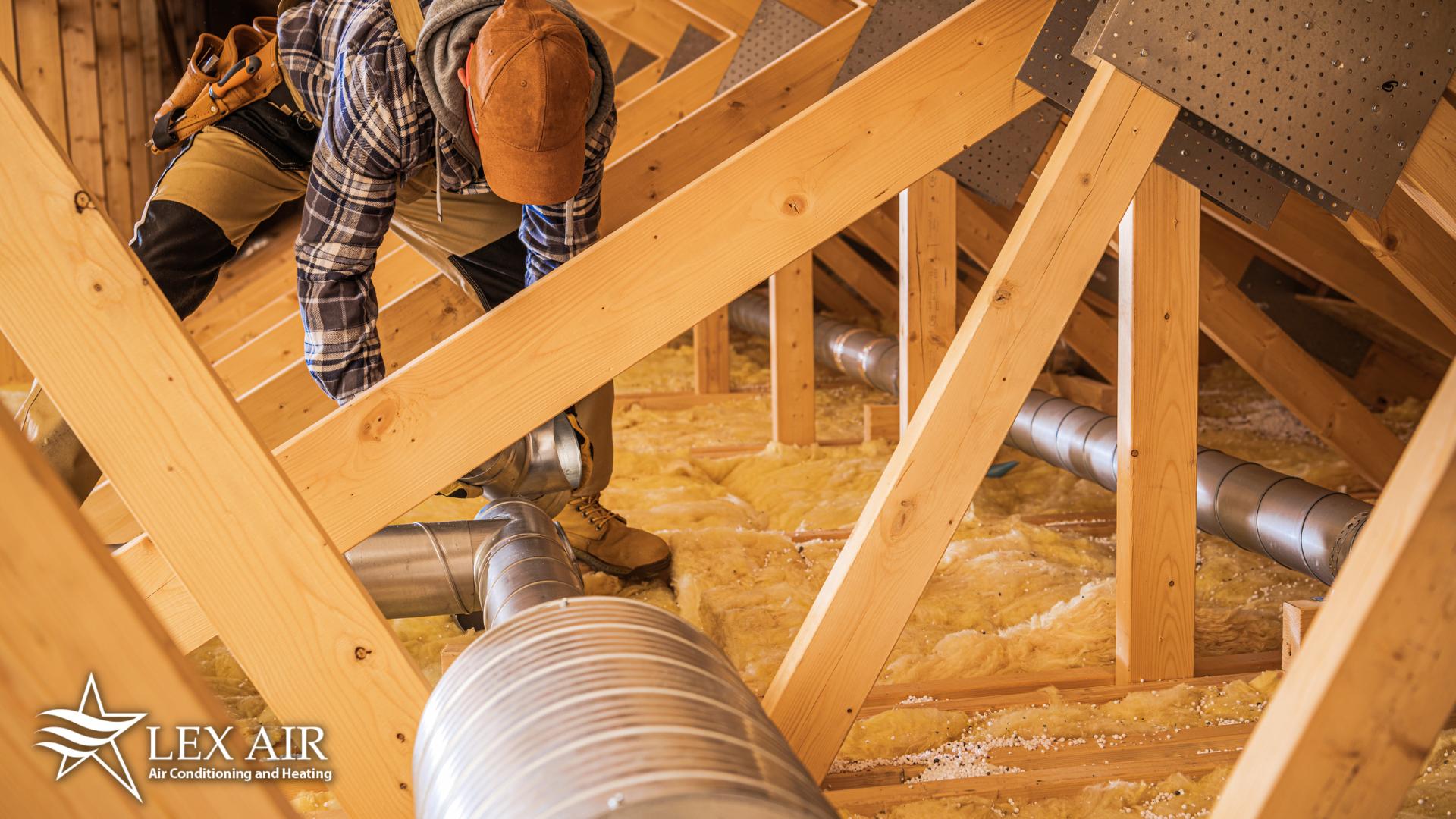
Air Ducts
The air duct system and air vents are two parts that make up the home’s ventilation system (the “V” in HVAC). The air ducts are responsible for blowing the warm or conditioned air into the different rooms of the home. Your ductwork is usually installed when your home is built and custom-fitted, depending on the size of your home. Ductwork is typically built using sheet metal or similar materials that are strong enough to handle airflow pressure. Ducts also have insulation to help reduce noise and heat loss. Inside the HVAC unit, a fan is responsible for blowing either warm or cool air throughout the ductwork, where it’s then distributed into various rooms.
The air ducts are vital to your home’s indoor air quality. Over time, ductwork can become clogged with dust, dirt, and other contaminants that can decrease the indoor air quality inside your home. Poor air quality can lead to respiratory problems and other health issues. It’s recommended to receive Carrollton air duct cleaning services every three to five years to help improve air quality so you and your family can breathe clean air.
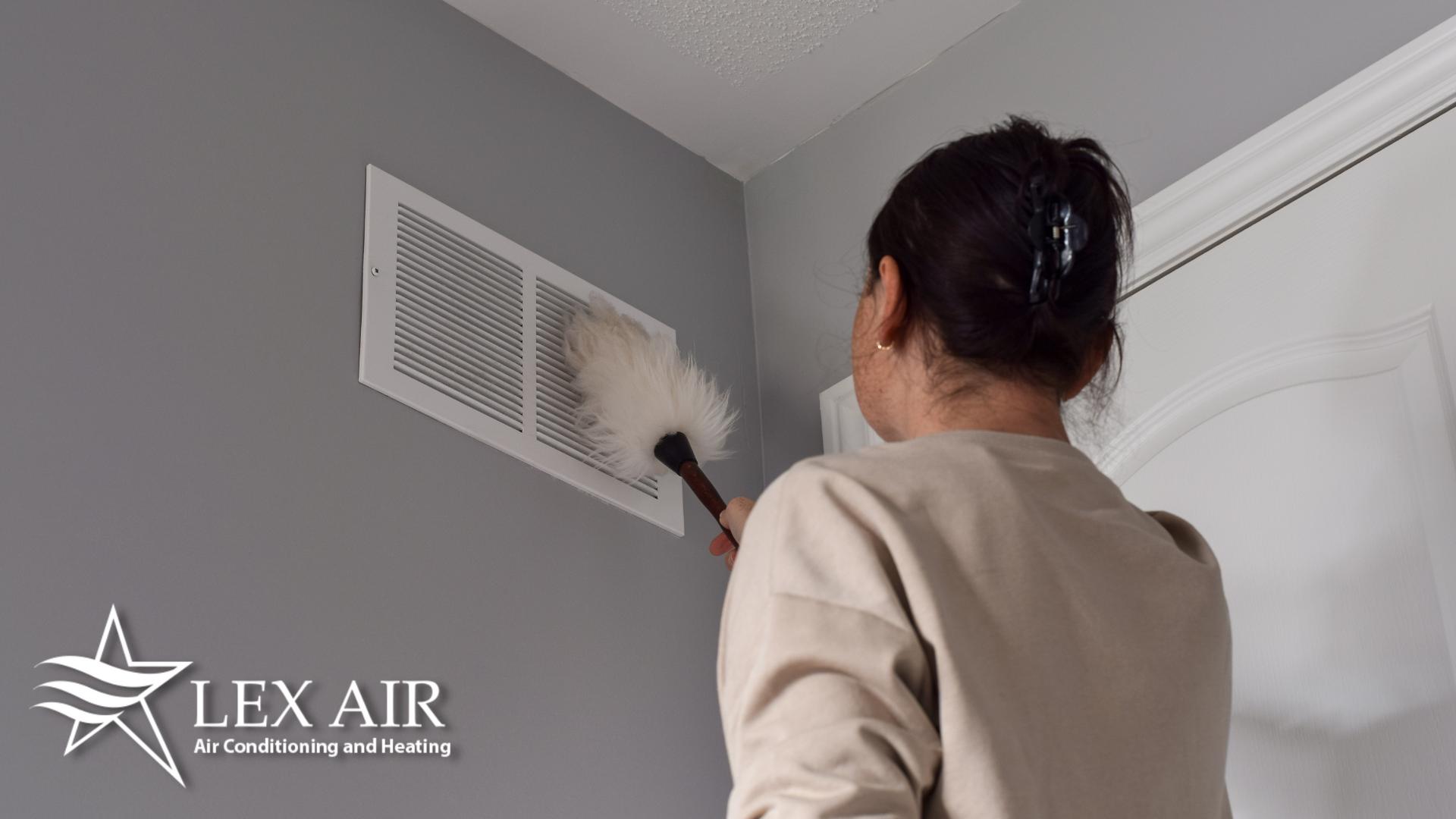
Vents
While the air ducts provide the route the warm or cold air travels through, the air vents are the openings from which air is expelled into rooms. Air vents can be installed anywhere within rooms of your home. The most common air vent is the floor vent, but there are also ceiling vents, wall vents, and register vents.
Vent covers can be made of wood or metal, and some have dampers to control the amount of air being blown into the room. Make sure air vents are not blocked by furniture to maintain maximum efficiency.
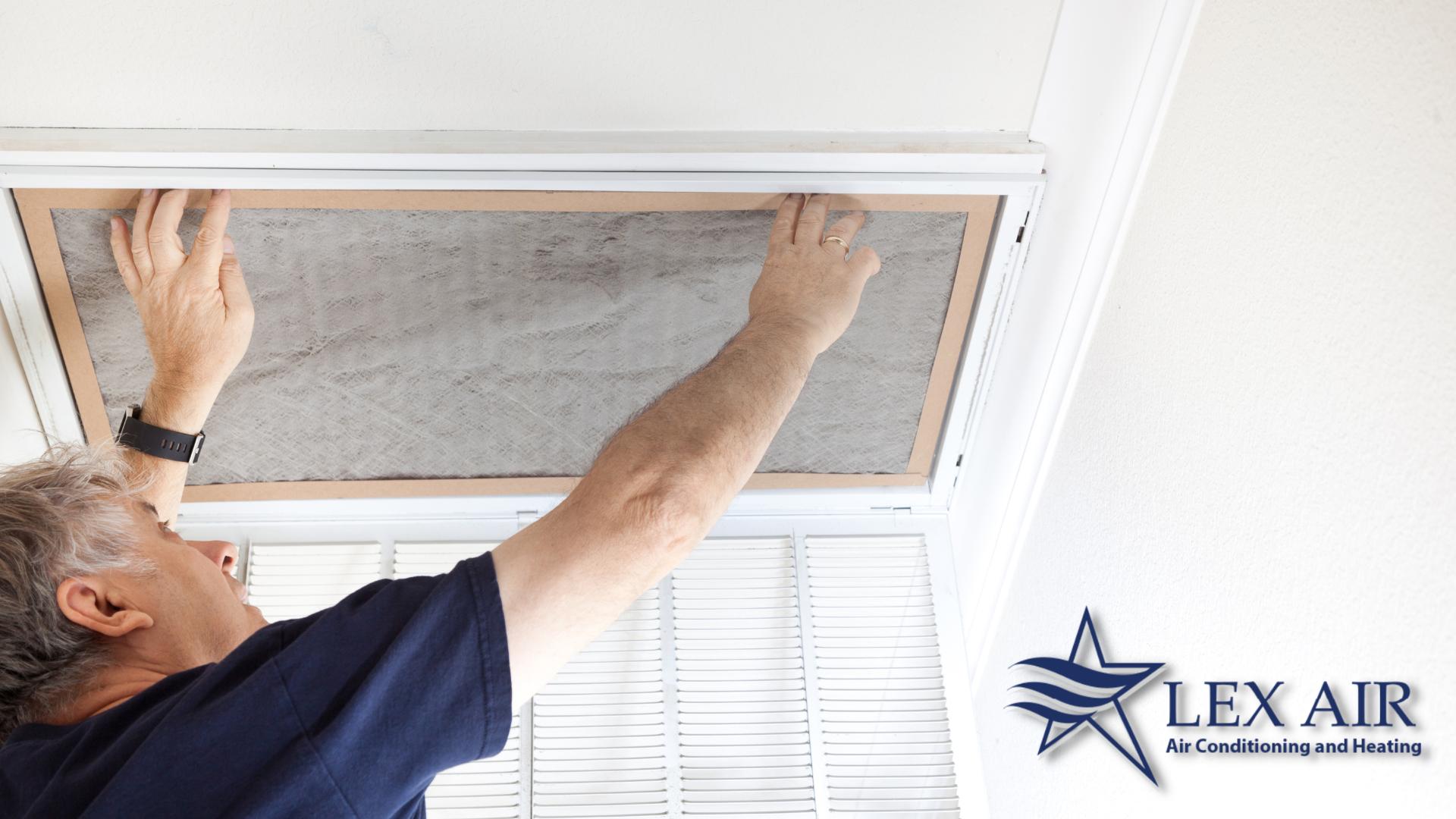
Returns
Supply air vents are responsible for blowing warm or cold air into the different rooms throughout your home. The return air vents are the larger metal grates that suck indoor air back through the HVAC system through an air filter. The filters should be replaced or cleaned at least every three months and more frequently if you have pets in your home or allergy symptoms.
A dirty filter can starve your system of airflow and decrease cooling and heating efficiency. Not replacing your air filters regularly can also lower indoor air quality by allowing dust and other particles to remain in the air instead of being caught in the filter.
Thermostat
The thermostat is the brain of the operation. You set your desired indoor temperature, and the HVAC system will cycle on and off to maintain that set temperature. Modern programmable thermostats help your HVAC system to run efficiently so you can save money on energy costs. Rather than just being set to one temperature for the whole day, they can be programmed to follow a precise hourly temperature schedule based on when you’re home, away, and sleeping.
Many thermostats can also be controlled and monitored via smartphone apps for adjustments on the go. They can also adjust temperatures when someone is present in the room. This kind of programming helps avoid wild swings in temperature, which can cause the unit to run nonstop.
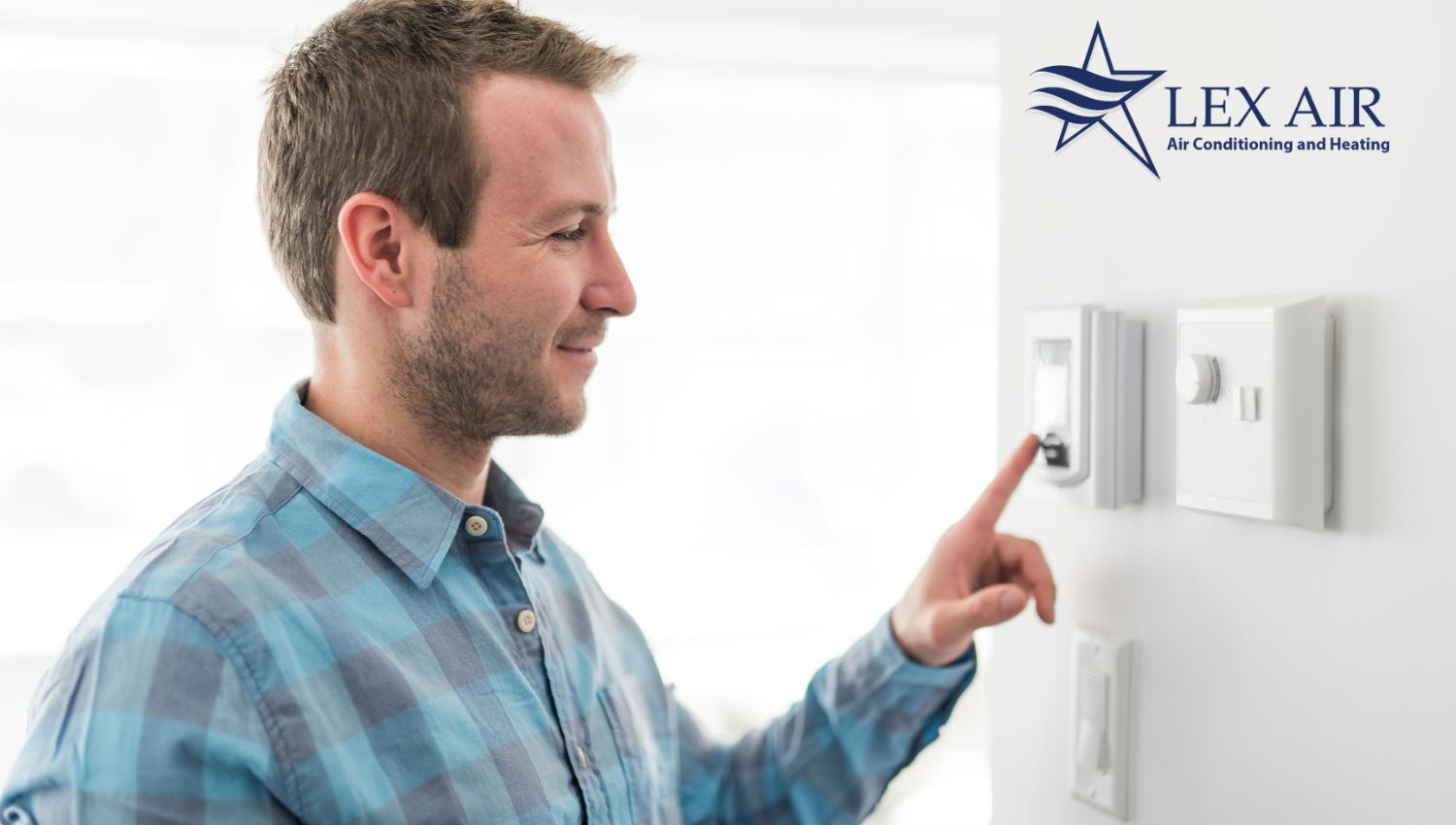
Heater
We’ve covered air conditioners and the ventilation systems that make up the “AC” and “V” of your HVAC system. Now we’ll break down the “H” part and explain the heating portion of HVAC units. Many homes in Carrollton, Texas, have furnaces, but heat pumps are gaining popularity as families try to increase their energy efficiency.
Furnaces use heat exchangers to increase temperatures before it’s distributed into the home. The heat exchanger is located inside the furnace with a hole on the top and bottom, also known as a flue. Once the heat exchanger has warmed the air, fans blow that air through the home’s air ducts and vents. It’s important to have your heater inspected regularly to ensure that it’s working correctly. Over time, the heat exchanger can become cracked, leading to unsafe air being distributed through your home and putting your family at risk of carbon monoxide poisoning.
If you start to notice any problems with your HVAC system’s heater, call the Carrollton heating service experts at Lex Air. We know heaters never wait until it’s convenient to break down or have issues, which is why we offer emergency HVAC services to our customers.
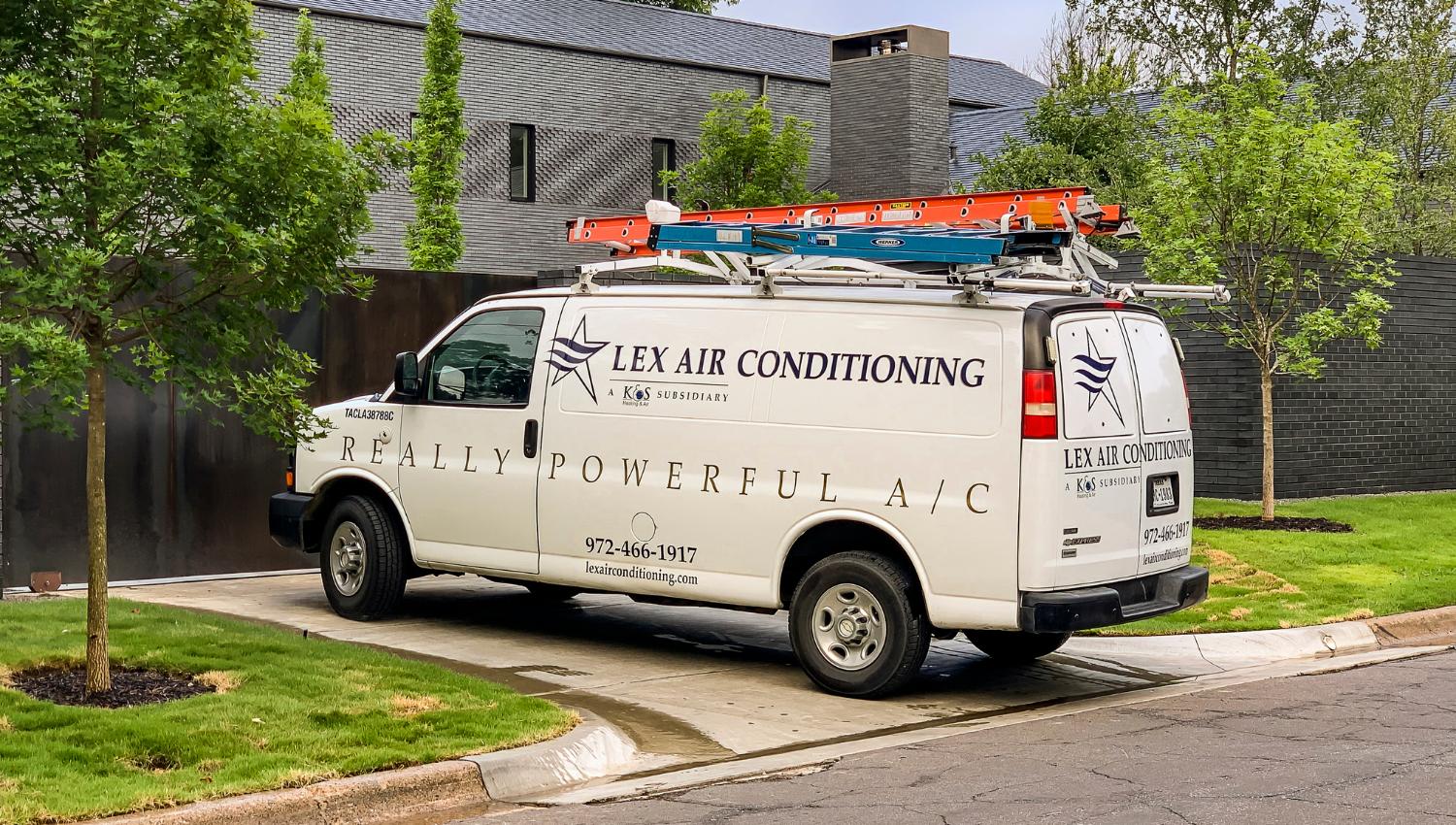
Trust the HVAC Professionals at Lex Air For All Of Your Heating and Cooling Needs
Now that you know more about how your HVAC system works, Lex Air Conditioning and Heating professionals are here to ensure it’s always in great shape. In addition to maintenance and repair services, we also provide installation services when it’s time for a new HVAC system. And don’t forget to sign up for our annual HVAC maintenance program! Our Carrollton HVAC experts will inspect, clean, and repair each component to ensure optimal performance.
To schedule an HVAC appointment with Lex Air, call us at (972) 217-8955 or reach out to us online today.
